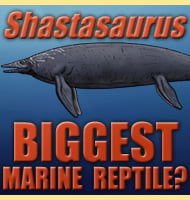Shastasaurus
Shastasaurus species and fossil distribution Shastasaurus hit the record books in 2011 with the re-examination of a set of ichthyosaur remains from British Columbia that were initially described as a new species of Shonisaurus back in 2004. Study of the remains has found that while they are similar, the remains are a better match … Read more
